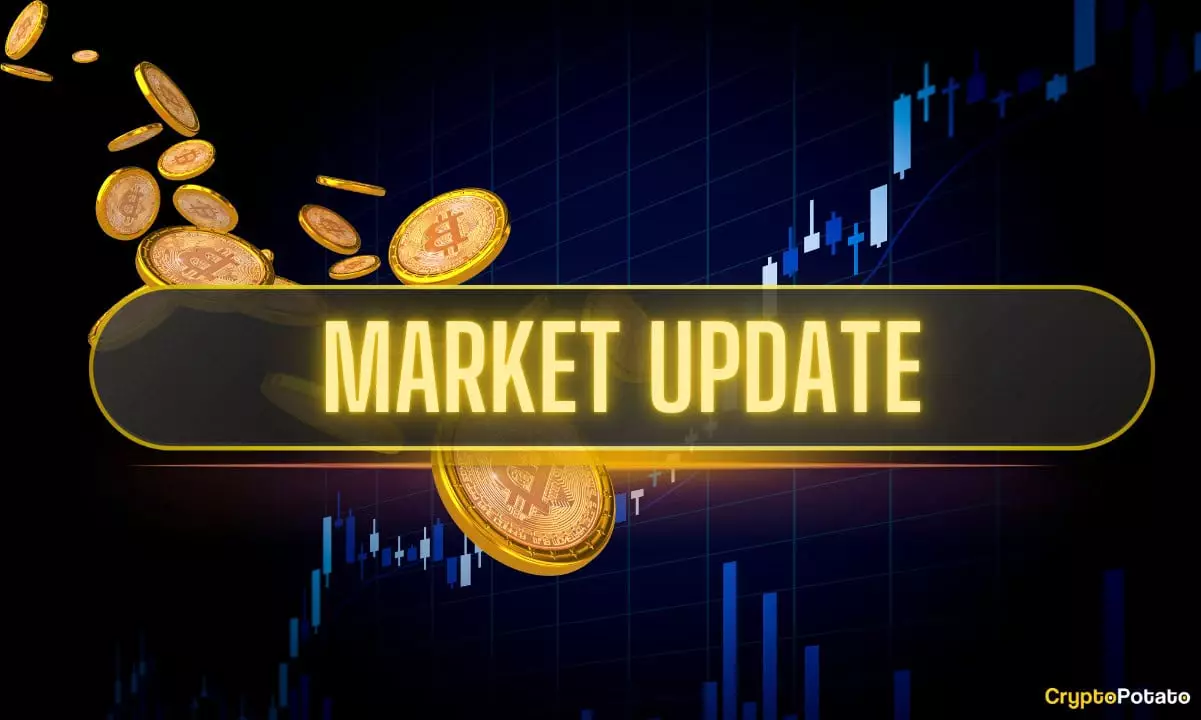The recent turbulence in the cryptocurrency landscape exposes a sobering reality: Bitcoin’s once-unassailable supremacy is waning. As the flagship digital asset falters, ceding ground to altcoins, it reveals deeper systemic vulnerabilities. This shift should not be dismissed as mere market volatility or fleeting investor interest—it’s a wake-up call that Bitcoin’s dominance might be approaching its peak, and trouble looms on the horizon. For years, Bitcoin has served as the bedrock of cryptocurrency markets, a ‘store of value’ perceived as resilient amidst chaos. Yet, recent events—particularly the sharp drop below $115,000 after a brief surge—highlight that even the strongest crypto can be vulnerable when institutional maneuvers and macroeconomic fears converge. The fact that Bitcoin’s price is down over 2.5% week-over-week, combined with the retreat of retail traders and the heavyhanded selling by giants like Galaxy Digital, speaks volumes about its current fragility.
This decline is further compounded by the internal dynamics of the market. The once steadfast perception that Bitcoin would be immune to swift corrections seems increasingly naive. Instead, its decline suggests a loss of confidence not just in the asset itself but in the ecosystem that surrounds it—an ecosystem increasingly influenced by institutional strategies that favor fleeting gains over long-term stability. As Bitcoin lost traction, investors are flocking toward altcoins, espousing a narrative of ‘altseason’ powered by speculative fervor rather than fundamental value. These altcoins, such as Binance Coin, Ethereum, and smaller tokens, are capturing market attention precisely because they offer bigger upside—and often, more risk. The current environment is ripe for a turning point where Bitcoin’s market share shrinks, not because it’s failing inherently but because the current macroeconomic climate and institutional strategies favor riskier, more volatile plays.
Altcoins Rising, Not As a Sign of Strength, but a Symptom of Crisis
The recent rally of altcoins is far from a positive indication of a thriving market; it is, in fact, symptomatic of a crisis in confidence toward Bitcoin’s long-term prospects. The substantial inflow into Ethereum ETFs—BlackRock’s notably reaching $10 billion—may seem like a sign of institutional validation, but it also underscores the shifting landscape of investor trust. These ETFs, often labeled as ‘paper’ assets, are perceived by skeptics like Robert Kiyosaki as inferior to holding actual Bitcoin, gold, or silver. Such skepticism points to an underlying truth: many investors doubt Bitcoin’s ability to serve as a truly resilient store of value amid macroeconomic instability and regulatory pressures.
Moreover, the recent sell-off in Ripple following a co-founder’s purported $140 million XRP sale exemplifies another troubling sign—large players and insiders are capitalizing on market volatility, revealing a lack of faith in the ecosystem’s sustainability. Such incidents erode retail confidence and foster a climate where speculative assets are favored over solid, fundamental investments like Bitcoin. Here lies the paradox: as the hype around altcoins grows, it masks a systemic issue—namely, that Bitcoin’s core value proposition as a safe, reliable hedge is under assault. The rising prices of coins like LTC, CRO, and Binance Coin are driven more by momentum and speculative fervor than intrinsic value, creating a dangerous bubble that could burst at any moment.
The allure of quick gains often blinds investors to the risks. While Ethereum approaches new highs driven by ETF inflows, it cannot escape the reality that the broader market is becoming increasingly volatile and unpredictable. This environment sowed the seeds for a potential crash—one where the inflated value of altcoins collapses, dragging the entire market with it and exposing Bitcoin’s declining role as the ‘anchor’ of the space.
Institutional Strategies and Market Skepticism Shape the Future of Cryptocurrency
The landscape is being reshaped by institutional actors whose complex motives often clash with the ideals of decentralization and long-term value. BlackRock’s impressive quick rise with its Ethereum ETF demonstrates how institutional investors are trying to capitalize on crypto’s hype cycle—yet, this strategic maneuvering might backfire if it undermines the genuine value proposition Bitcoin was built upon. The focus on ETFs and paper-backed assets obscure the core issue: the loss of faith in the inherent value of cryptocurrencies outside of speculative avenues.
As the Hash Ribbons indicator signals a potential end to miner capitulation, the market’s optimism should be tempered with caution. A typical pattern in market cycles shows that such signals often precede sharp corrections rather than sustained uptrends. Meanwhile, the narrative spun by analysts—who attribute recent Bitcoin rallies predominantly to institutional buying—ignores the growing influence of large whales and coordinated market moves designed to create artificial bullishness. Retail investors, increasingly sidelined, are being pushed further into the sidelines as whales and institutions manipulate the narrative to suit their interests.
Ultimately, the shift from Bitcoin-centric dominance to a more fragmented altcoin market reveals fundamental doubts about Bitcoin’s resilience as a global store of value. While some see this as a natural evolution—an opportunity for innovation within the crypto ecosystem—a critical view suggests it signals an impending period of instability. This period could define whether Bitcoin can adapt to the evolving landscape or will be overshadowed by the very speculative assets that now dominate the scene.
The future of cryptocurrencies hinges on whether Bitcoin can regain its footing as a stable, trusted asset or whether the current shift toward altcoins signals the beginning of a broader crisis—one that questions the very foundations of digital money in the center-right liberal framework that values stability, prudence, and the preservation of long-term wealth.

